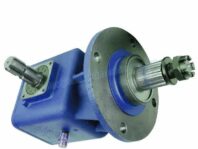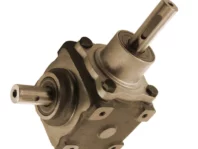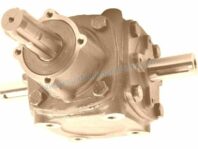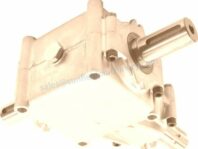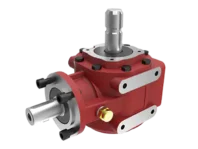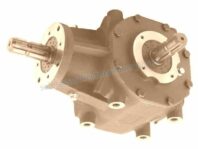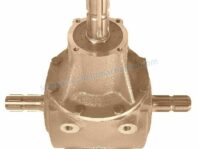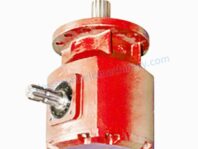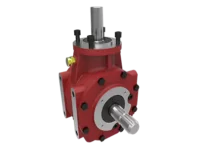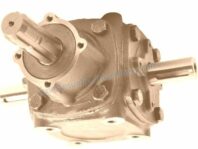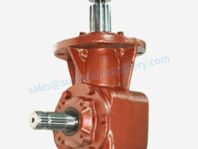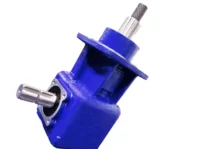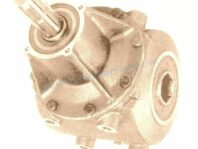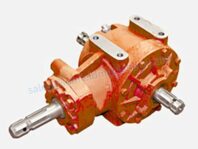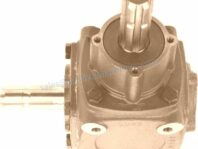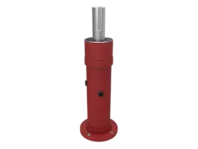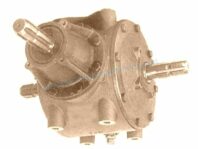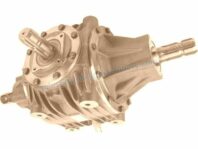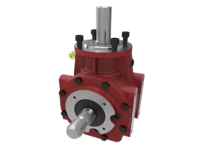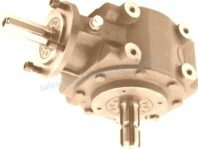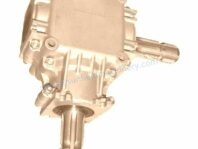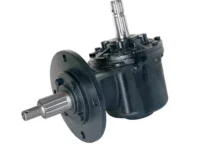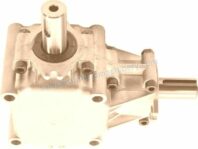Lawn mower gearbox
A lawn mower is a mechanical tool used to trim lawns, vegetation, etc. It consists of an engine, a walking wheel, a traveling mechanism, blades, handrails, and control components.
There are two power transmission belts on the power output wheel, which transmit the belt to the power transmission of the cutting system, called the cutting power belt, and the other is the traveling power belt.
A cutting power belt is coupled to the cutting system by the rotating wheel. When the pull switch is loose, the power supply is turned off. The side of the walking power belt is also equipped with a pressure roller. The pressure roller is connected with the cable switch. When the pressure roller is in this position, the belt remains in a relaxed state, and the engine power cannot be transmitted back. The wheel is connected to the gear box. The mower gearbox is a combination of several sets of gears that are adjusted by different gear combinations to achieve engine speed and direction of rotation. For the gearbox, the runner is its input power, and the gearbox combination is completed by the shift lever. This is the power output shaft of the gearbox, and the power is output to the walking system to complete the mower operation.
Lawnmower Gearboxes Product Catalogs:
The trusty lawn mower gearbox, often tucked away behind the engine and blades, is the unsung hero of a well-maintained lawn. It's the silent workhorse that transfers power from the engine to the blades, making those beautiful stripes in your yard a reality. But what exactly is it, and why is it important?
Under the Hood:
A lawn mower gearbox is essentially a series of gears enclosed in a housing. These gears work together to increase the engine's torque and change its speed, providing the right amount of power to the blades for efficient mowing. Different gearboxes offer different gear ratios, catering to various lawn sizes and mowing needs. Some even offer multiple speeds, allowing you to adjust the blade speed for different tasks, like mulching or tackling thick grass.
The Importance of Quality:
A high-quality lawn mower gearbox is vital for several reasons:
- Durability: Made from robust materials like cast iron and steel, a good gearbox can withstand the wear and tear of regular mowing, lasting for years to come.
- Performance: Efficient gearboxes minimize power loss, ensuring your mower blades get the full force of the engine, leading to cleaner cuts and better overall performance.
- Smooth Operation: Precision-engineered gears deliver smooth, vibration-free operation, making mowing a more comfortable experience for you and your lawn.
Choosing the Right Gearbox:
When selecting a lawn mower gearbox, consider these factors:
- Mower type: Different mower types (walk-behind, riding, zero-turn) require different gearboxes with specific torque and speed capabilities.
- Deck size: Larger mower decks demand more power, so ensure the gearbox can handle the required load.
- Personal needs: Do you need multiple speeds for versatility? Consider your mowing habits and choose the gearbox that best suits your requirements.
Maintaining Your Gearbox:
Like any mechanical component, regular maintenance is key to keeping your lawn mower gearbox in top shape:
- Oil changes: Consult your mower's manual for the recommended oil and change intervals. Fresh oil lubricates the gears, preventing wear and tear.
- Cleaning: Inspect the gearbox housing for debris and clean it regularly to prevent overheating and potential damage.
- Signs of wear: Be alert to unusual noises, grinding, or oil leaks, which may indicate gearbox issues requiring professional attention.
How to Properly Lubricate a Lawn Mower Gearbox
Properly lubricating the gearbox of a lawn mower is essential for its smooth operation and to prevent excessive wear and tear. Here are the steps to follow:
1. Preparation:
- Ensure the lawn mower is turned off and the spark plug wire is disconnected to prevent accidental startup.
- Position the lawn mower on a flat and stable surface, preferably with the fuel tank empty or with minimal fuel to avoid spills.
- Gather the necessary tools and lubricant. Typically, you will need a wrench, a socket set, a lubricant suitable for gearboxes (check the lawn mower's manual for specific recommendations), and a clean cloth.
2. Access the Gearbox:
- Locate the gearbox on the lawn mower. It is usually situated near the blade assembly and will have a fill plug or dipstick.
- Use the appropriate tools to remove the fill plug or dipstick and set it aside in a safe place.
3. Drain Old Lubricant (if needed):
- Check the lawn mower's manual to determine if the gearbox requires draining of the old lubricant. Some gearboxes are designed to be filled for life and do not require regular draining, while others may have a drain plug.
- If draining is necessary, place a suitable container beneath the gearbox to catch the old lubricant. Remove the drain plug using the appropriate tools and allow the lubricant to drain completely. Replace the drain plug securely.
4. Apply New Lubricant:
- Refer to the lawn mower's manual to determine the correct type and amount of lubricant required for the gearbox. It is crucial to use the recommended lubricant to ensure optimal performance.
- Using a funnel or a suitable dispensing method, carefully add the new lubricant into the gearbox until it reaches the recommended level. Avoid overfilling, as it can lead to leaks or other issues.
5. Reassemble and Clean Up:
- Once the lubricant is added, wipe any excess lubricant around the fill plug or dipstick opening and ensure it is clean and free of debris.
- Reinsert the fill plug or dipstick and tighten it securely but not excessively.
- Clean up any spilled lubricant and ensure the area around the gearbox is clean and free of any tools or debris.
6. Final Steps:
- Reconnect the spark plug wire if disconnected earlier.
- Start the lawn mower and allow it to run for a few minutes to distribute the lubricant throughout the gearbox.
- Monitor the lawn mower for any leaks or unusual noises during operation. If you notice any issues, consult the lawn mower's manual or seek professional assistance.
Remember to consult the specific instructions provided by the manufacturer in the lawn mower's manual, as lubrication procedures may vary depending on the make and model.

